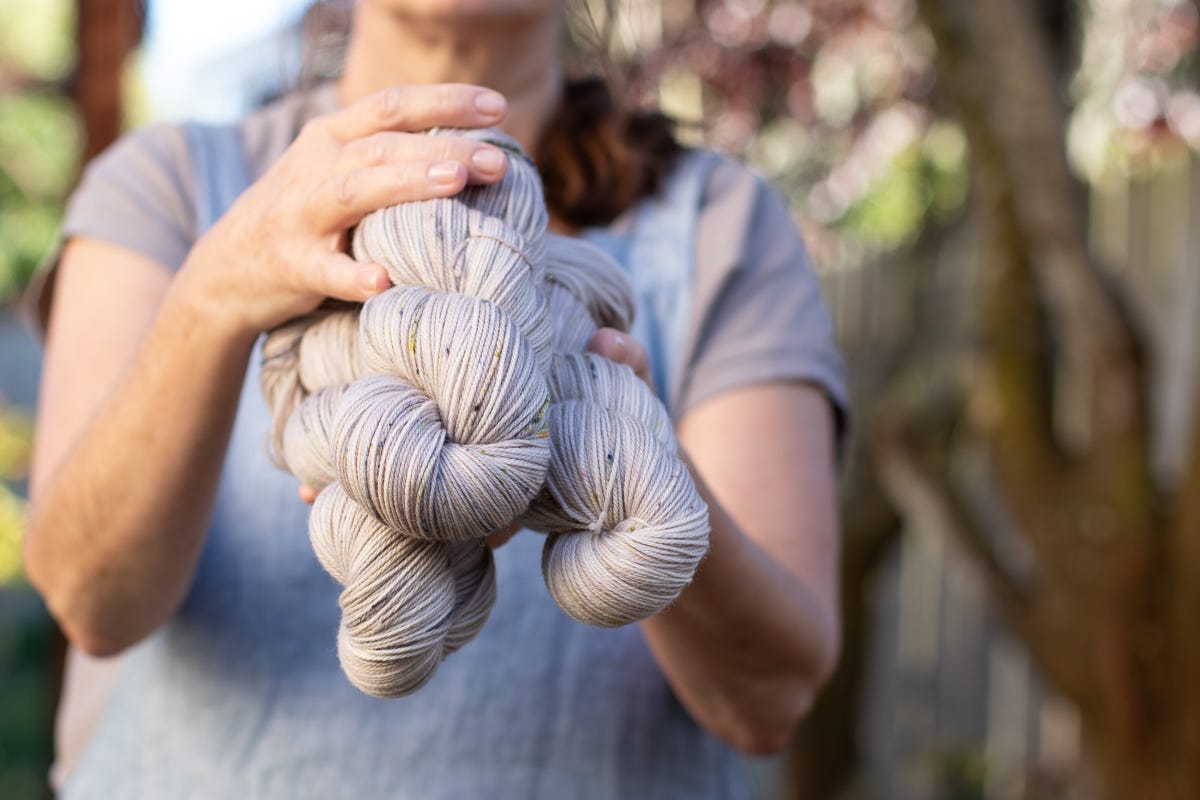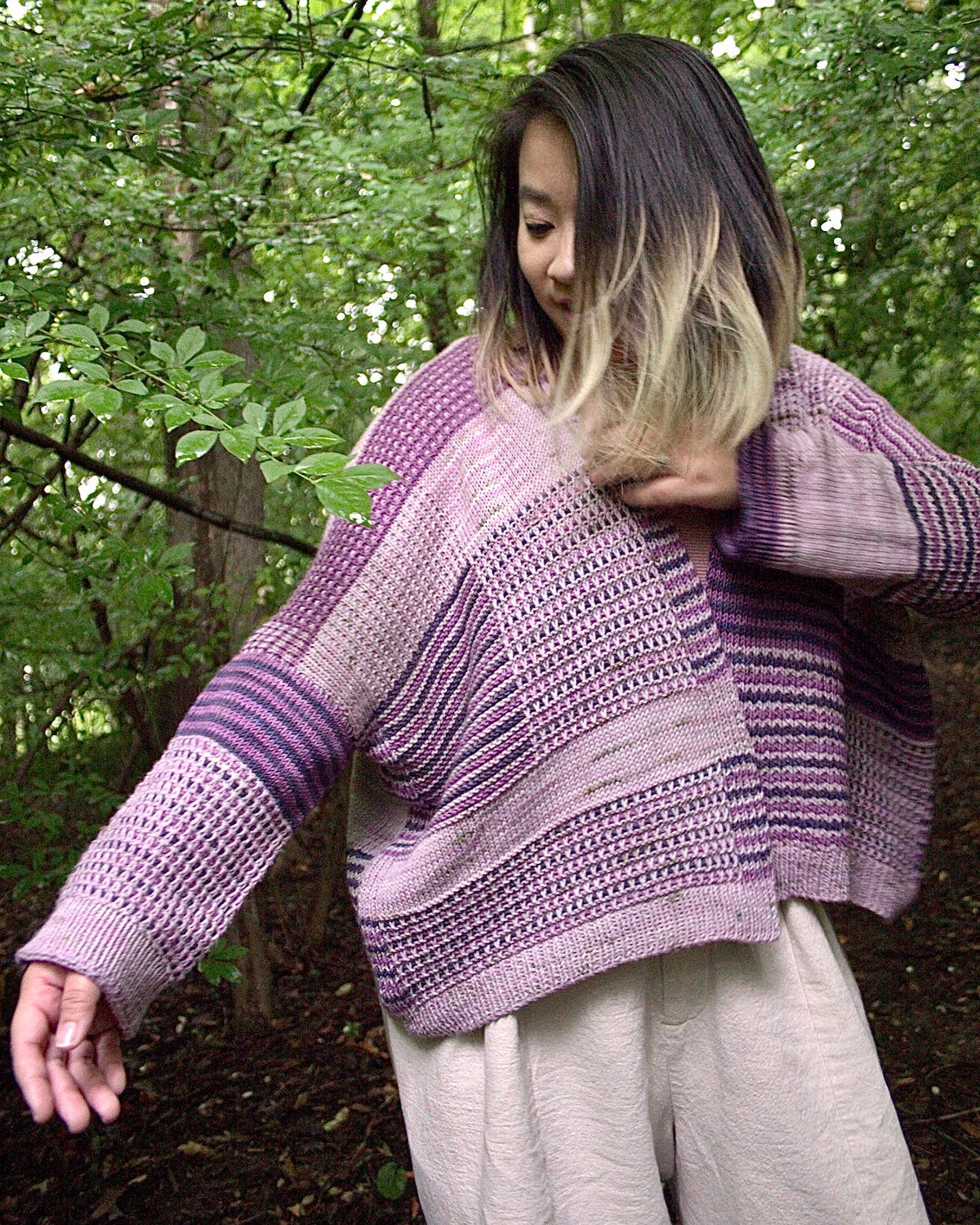Let's challenge the status quo, even and especially, in our knitting spaces
Thinking about how to include people, how to lift us all up, and how to share power

It’s been a heavy week in the news out there, friends. Another war, lots of misinformation, unimaginable grief and fear, rising tides everywhere of the -isms we fight against. I want to acknowlege what’s going on and hold some space for whatever you’re feeling or managing or trying not to think about. Joy is still here, alongside the pain. We can hold several, often complex, often competing, things at once.
I am a business nerd and love to think about the way organizations operate, whether that’s nonprofits (which I did in my previous career) or small yarn businesses.
I love to think about how we do things and how that can advance our values. I also like thinking about the converse: how our actions can subtly contribute to things we don’t want. The -isms, microaggressions, and structural disadvantages that are baked into the status quo.
Making my business align with my values — my values of including people, of actively thinking about diversity and social justice, of making sure everyone around me earns a fair wage — this is the kind of thing I groove on. I feel so good when I am doing the most I can to be the best version of myself.
Undergirding my work as a knitting artist is a belief that if we can’t be the best versions of ourselves in the knitting business—a business that is all about softness, going slow, and doing things differently—then we truly have no hope.
Said another way: This knitting business (whether you’re a business owner or a knitter who buys things from knitting businesses) …. this place is where, with the fewest social barriers, we can create the kind of world we want to live in. Why on earth would we replicate the status quo of power players, parasocial weirdness, power hoarding, racism or any other other -ism?
I spend a lot of time thinking about the nitty-gritty work of making by business embody my values, asking myself questions like ….
Can I pay and photograph models so that my knitting patterns don’t look like a gallery of a white lady (which it would be if I modeled everything myself)?
Is the way things are “usually” done (like when a yarn dyer buys pattern codes from a knitting designer at a 50% wholesale price) the best way to do them? Or does it subconsciously reinforce the status quo?
Am I sharing revenue with folks (like, test knitters) who might contribute to a project’s success? Can I do that with cash or gift cards to my shop? Or perhaps by providing full yarn support?
Influence is never just the result of one person’s efforts, despite the American myth of pulling oneself up by their bootstraps or having that single great idea. We are more dependent on one another than we recognize, even as knitters, even as knitting business owners, even as humans on this shared beautiful planet.
If you’re a knitter who buys yarn, let’s buy things that add to the world we want to see.
I don’t know if we can change systems by making small changes in our own small lives, but I do know that apathy or feeling hopeless aren’t going to work, either. The system is always the biggest problem, but we also always have the power to focus on right now, what we can do in our own small lives, and to try and be the best versions of ourselves.
With this, I have an offering for you today: a collaboration with the brilliant Tina Tse (this is our third project together!) that embodies every part of our shared values:
That knitting is where we find joy and creativity
That power should be used to lift up all of us
That it’s a great power move to draw some boundaries and not work with and not give mental attention to systems that aren’t accessible and inclusive (did you know that Tina doesn’t sell her patterns on Ravelry?)

Tina created the Texture Garden Cardigan pattern using my yarn, and I am delighted to share that the pattern (available on her website) is now also available on my website and I have a shop full of yarn if you want to make one.
Like the business and inclusivity nerd that I am, I want to tell you about some of the behind-the-scenes practices that make this offering so beautiful:
There’s enough for everyone. I don’t like yarn updates where you have to set a timer to be able to buy the yarn. Yes, there is a limited quantity that’s ready to ship (I dyed 40 skeins in advance), but if you want some, I would love to make it for you. As things sell out, I’ll convert the listings to preorders. (Preorders will ship in 4-6 weeks and sooner if I can.)
Both Tina and I benefit from the sale of yarn. It takes a lot of work to write a knitting pattern and create the sample. Even if you do all the work yourself, it takes dozens and dozens of hours to make a good sweater pattern. My part of this collaboration—even dyeing the yarn and writing this newsletter—likely took less time than Tina spent on the pattern. Unless her pattern sells like the top 1 percent of knitting designers, she won’t earn anywhere near the profit I will.
But here’s the thing: I can’t sell yarn effectively without new patterns. And I can’t write my own patterns fast enough and dye yarn and have a decent quality of life, at least not without hiring (maybe lots of) people and likely paying them fairly low wages.
To reflect the interdependent nature of our work, I am sharing revenue. Tina gets a share of the revenue from each skein of yarn you buy. This means her work ends up being more fairly compensated, and my work is also fairly compensated (and takes into account the greater financial risk I bear related to physical inventory).There are ways for everyone to participate in the good feelings here. If you don’t knit or don’t want to knit this sweater, but want to support my work, you can contribute to my Community Fund. Or become a paying subscriber to this newsletter. If you don’t have room in your budget for small luxuries like new knitting patterns, you can apply to receive a Community Fund gift card for yarn. Or you can buy Tina’s pattern using one of her pay-what-you-choose codes.
This is a collaboration you can feel good about.
It matters when we share power. It matters when we question the status quo.
I shared some of the early thoughts for today’s newsletter on Instagram earlier this week, and wow, did they resonate, so I’d like to share them again here:
I think it matters more than ever when we, ordinary folks, try to see beyond the status quo to voice our values, to make things by hand, to slow down, and to subvert the ways that all the -isms are ingrained in the world. It may be a small thing—doing this in our small, individual lives—but I believe each of us helps to create a rising tide of positive social change.
May you feel part of that rising tide today.
xo Anne





So much here to ponder and turn over in my mind. Holding competing, complex emotions at the same time--I remind my husband of this when he feels he should or shouldn’t feel a certain way. We are complex creatures.
Power--getting, holding on, keeping, making sure no one else has more. And wielding it to benefit the few at the expense of the others (“others” in all senses of the word).
Yet as you demonstrate, power can be shared. We each have our own abilities and opportunities to include or exclude. When we include, we make lives richer both financially and emotionally.
I’ve knitted socks almost exclusively for many years and am just now getting into sweaters. I’m horrified by fast fashion and do not want to participate in any way in that exploration. My knitting socks and sweaters may not make much difference, but it’s what I can do.
I don’t know much about sustainable yarn production, so I’m learning. I use mostly wool, limit the acrylic, and am making bamboo socks for my vegan son-in-law. Christmas presents this year are all hand knitted, and they are all thrilled!
I would like to order enough of one color of your beautiful yarn to make a plain sweater, but I want to make sure that type of purchase benefits Tina. Do I need to order for her pattern for that to happen, or is it any purchase of the yarn? Either way. Just let me know.
Thank you for caring enough to think deeply about the world and about knitting. I look forward to your weekly writing.
What you say is true, Anne, a rising tide lifts all boats. All positive actions, no matter how small, make a difference! I love the colorways you've made and the clever patchwork of Tina's sweater design.